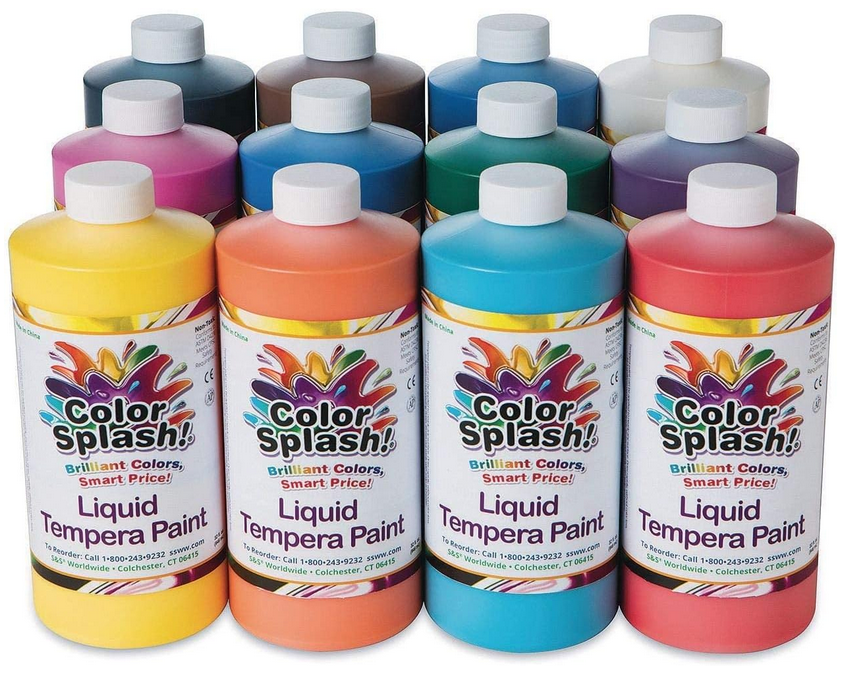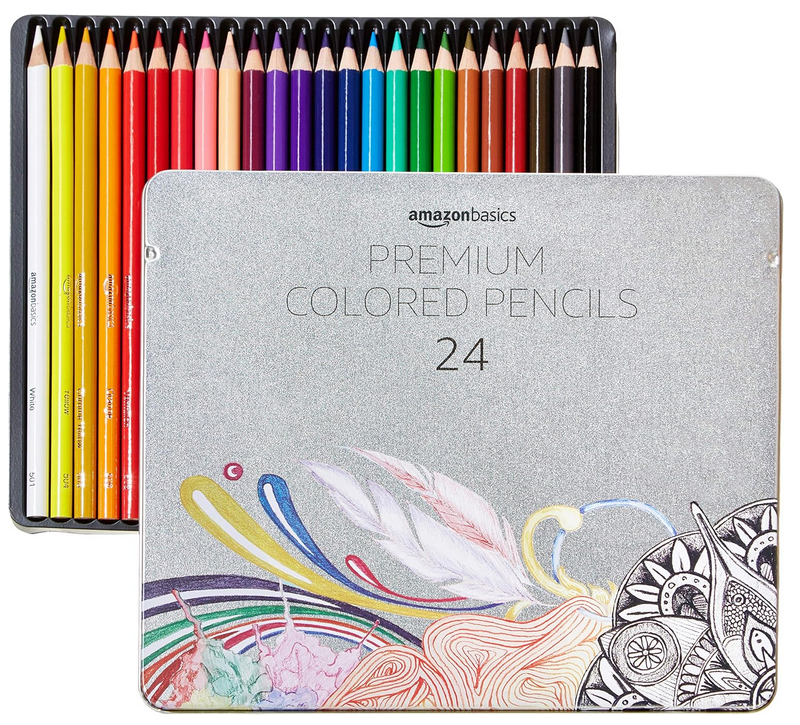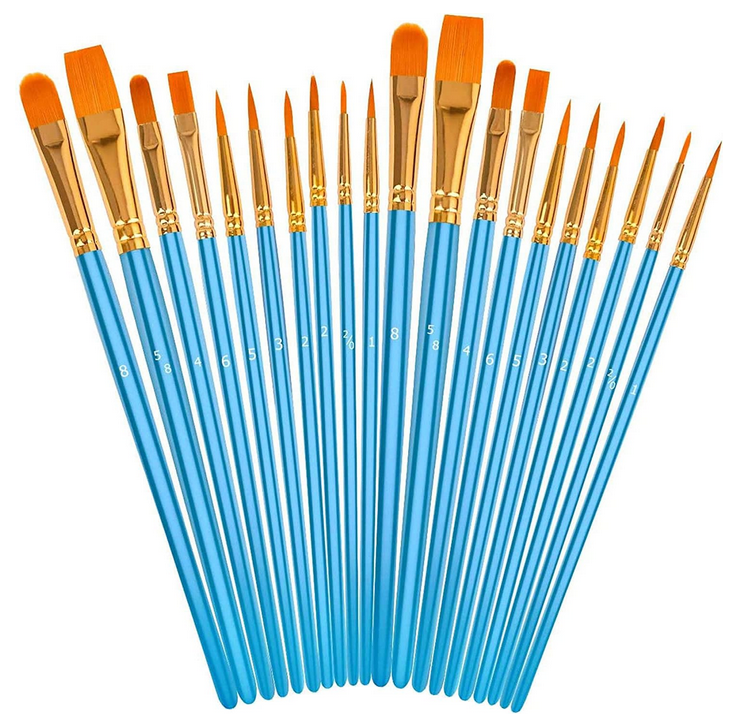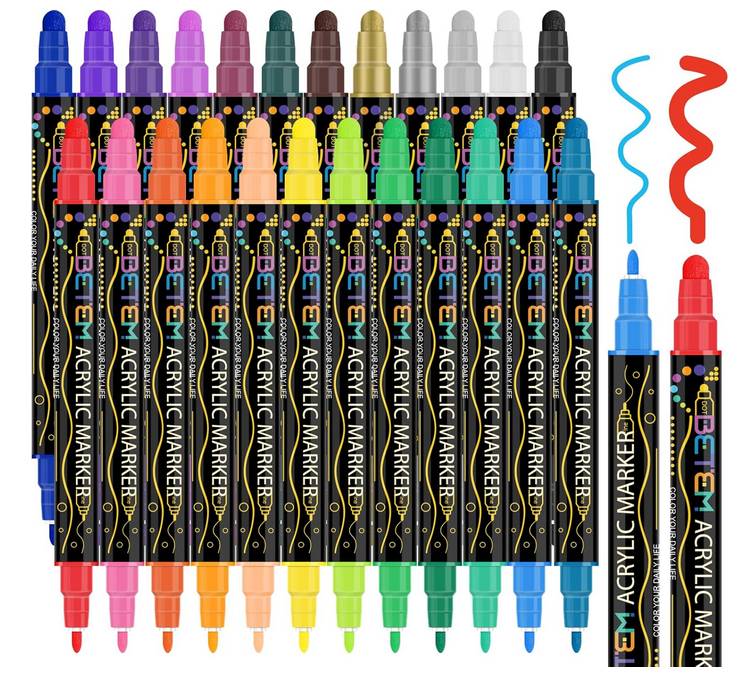- Home
- Art History
- ArtSpeak
ArtSpeak
... speaking of art ....
A
- abstract art - art that depends significantly form natural appearances. Forms are modified or or changed to varying degrees in order to emphasize certain qualities or content. Recognizable references to original appearances may be very slight.This term is also used to describe art that is nonrepresentational.
- Abstract Expressionism - a manner of abstract painting, also called action painting - paint is applied in expansive, unpremeditated gestures. Especially associated with New York artists, such as Jackson Pollock and Mark Rothko.
- academy - an institution of artists and scholars, originally formed during the Renaissance to free artist from control by guilds and to elevate them from artisan to professional status.In an academy, art is taught as a humanist discipline along with other disciplines of the liberal arts.
- aesthetic - pertaining to the sense of the beautiful and to heightened sensory perception general.
- aesthetics - the study and philosophy of the quality and nature of sensory responses
related to, but not limited by, the concept of beauty,. Within the art
context: The philosophy of art focusing on questions regarding what art
is, how it is evaluated, the concept of beauty and the relationship
between the idea of beauty and the concept of art.
- afterimage - the visual image that remains after an initial stimulus is removed. Staring at a single intense hue may cause the cones of color receptors, of the eye to become fatigued and perceive only the complement of the original hue after it has been removed.
- airbrush - a small-scale paint sprayer that allows the artist to control a fine mist of paint.
- analogous colors - closely related hues, especially those in which a common hue can be seen; hues that are neighbors on the color wheel, such as blue, blue-green, and green.
- aperture - in photography, the camera lens opening ants relative diameter. Measured in f-stops such as f/8, f/11, etc. As the number increases, the size of the aperture decreases, thereby reduc9ng the amount of light passing through the lens and striking the film.
- apse - a semicircular end to an aisle in a basilica or a Christian church. In Christian churches an apse is usually placed at the eastern end of the central aisle.
- aquatint - an intaglio printmaking process in which value areas rather that lines are etched on the printing plate. Powdered resin is sprinkled on the plate, which is then immersed in an acid bath. The acid bites around the resin particles, creating a rough surface that holds ink. Also, a print made using this process.
- arcade - a series of arches supported by columns or piers. Also, a covered passageway between two series of arches or between a series of arches or between a series of arches and a wall.
- arch - a curved structure designed to span an opening, usually made of stone or other masonry. Roman arches are semicircular; Islamic and Gothic arches come to a point at the top.
- armature - a rigid framework serving as a supporting inner core for clay or other soft sculpting material.
- art criticism - the process of using formal analysis, description, and interpretation to evaluate or explain the quality and meanings of art.
- Art Nouveau - an art style that originated in the late 1880s based on the sinuous curves of plant forms. It was used primarily in architectural detailing and the applied arts.
- artist's proof - a trial print, usually made as an artist works on a plate or block - to check the progress of a work.
- Arts and Crafts - influential late nineteenth century movement that aimed to revive vernacular, often medieval, forms and methods in reaction against industrial mass production.
- assemblage - sculpture using preexisting sometime "found" objects that may or may not contribute their original identities to the total content of the work.
- automatism - embracing the the results of chance and irrational impulse, Surrealists sought to bypass conscious artistic control, thereby releasing deeper, unconscious, mental processes.
- avant-garde - assertive new or progressive art.
- asymmetrical - without symmetry.
B
- balance -
- Baroque - a dramatic, dynamic style associated with the Catholic counter-Reformation of the seventeenth century; this period and its art.
- Basilica - a Roman town hall with three aisles and and apse at one or both ends. Christians appropriated this form for their churches.
- Bauhaus - German art school existing from 1919 to 1933, best known for its influence on design, leadership in art education and its radically innovative philosophy of applying design principles to machine technology and mass production. Closed under Nazi rule in 1933.
- Bodhisattva -
- buttress -
- Byzantine Art - of the Easter Roman Empire from 330 to 1453. For most of this period, the classically inspired and hieratic forms of Byzantine art were Christianity's primary artistic expression.
C
- calligraphy - the art of beautiful writing in which the artistic qualities of the handwriting are as important as its textual meaning, often more so.
- camera
- camera obscura - a box with a pinhole at one end allowing light to enter for tracing.
- cantilever
- cartoon
- casting
- catacombs
- ceramics
- chiaroscuro - light and dark
- Classical - form of cultural expression that reflects the style of ancient Greece and Rome.
- collage
- color field painting
- color wheel
- commodification - art is said to be commodified when it is traded like any product of industrial capitalism.
- Complementary colors
- composition
- conceptual Art
- Constructivism - an early twentieth-century Russian art movement based on the idea that art should be constructed from geometric elements and modern materials rather than imitating appearances
- content
- contrapposto
- cool colors
- Cubism - art movement that began in Paris around 1907 with Braque and Picasso dismantling of traditional rules of perspective and composition in painting.
- cuneiform - form of wedge-shaped script used in Mesopotamia between the third and first millennia BC based on angular characters derived from an earlier pictographic script.
- curvilinear -
D
- Dada - movement founded in Zurich, Switzerland in 1915, espousing anarchy, irony, and chance as means of opposing the political and cultural establishment.
- daguerreotype
- depth of field
- drypoint -
E
- earthenware
- eclecticism
- edition
- elevation
- encaustic
- engraving
- Enlightenment - phase in European history roughly corresponding to the eighteenth century, when intellectuals widely believed that human experience, knowledge, and society has a purely rational basis.
- en plein air - from the French term for "in the open air," the practice of painting outdoors.
- etching - a printing technique involving drawing or scratching a metal plate which will later be inked
- Expressionism - early twentieth century German art movement. More widely, any art that emphasizes the expression of the artist's feelings.
F
- Fauvism - from the French term "fauves" for wild animals used to explain the work of Matisse, Derain and others around 1905 that used non-naturalistic strong colors.
- feminism
- feng shui
- figurative - art concerned with recognizable objects and figures, often contrasted with non-representational or abstract, (aka: representational art).
- figure
- focal point - a high schooler's remark
- folk art
- font
- foreshortening
- form
- format
- fresco - from the Italian word for fresh - painting into wet plaster (applied to a wall).
- frieze - a horizontal band running around a building (originating in Greek temples) between the roof and the supporting walls or columns which provides a long narrow horizontal field for decoration.
- frontal
- Futurism - Italian art movement founded by Filippo Tomasso Marinetti in 1909. Futurism rejected historical art and architecture and glorified machines, speed and war.
G
- gesso
- glaze
- glyph - element in a carved script, for example the pictographic script on Pre-Colombian Maya buildings.
- Gothic - European style of art and architecture of the twelfth to fifteenth centuries. Later rejuvenation of this style would become known as Neo-Gothic or Gothic Revival.
- gouache
- ground
H
- happening
- hard-edge
- hatching
- Hellenistic
- horizon line
- hue
- humanism - intellectual movement in fifteenth- and sixteenth-century Europe, characterized by renewed interest in ancient Greek and Roman literary and artistic culture and a desire to develop its secular modern equivalent.
I
- icon
- iconography
- illusionism - using artificial means to create the effect of real experiences, such as flat painted objects that appear three-dimensional.
- impasto - thickly applied paint
- implied line
- Impressionism
- inkjet - type if printer that translates digital information from a computer into jets of ink that produce text or images.
- installation
- intaglio
- intensity
- imermeidate color
- International Style
- kachina
- kiln
- kinetic art
- kore
- kouros
J
- jeu d'esprit - French term meaning "game of wit."
K
- kachina
- kiln
- kinetic art
- kitsch - German"trash" or "trashy." Used of art that deliberately combines references to popular culture with the language of "high" (elite) art or assertively courts the accusation of bad taste.
- kore
- kouros
L
- lens
- life-drawing - drawing from a nude model.
- linear perspective
- linoleum cut
- lithography
- local color
- logo
- loom
- lostwax
M
- madrasa
- Mannerism - style of Italian art from the 1520s to about 1600. Vasari praised the maniera ("style") of his contemporaries, but Mannerism later became a pejorative term for affectation and distortion.
- mass
- mat
- matte
- medium
- mihrab
- minaret
- Minimalism - movement in European and American sculpture and painting of the 1950s and 1960s that that subsumed the artist's personal engagement in the work and emphasized the integrity of rational configurations of geometric shapes.
- mixed media
- mobile
- modeling
- Modernism - broad term for tendencies in early twentieth-century art and culture that broke with conventions of the preceding era, including abstract and Surreal art.
- monchromatic
- montage
- mosaic
- mosque
- motif - artists who depict what is in f fron them are said to work "from the motif" (French: sur le motif - "in front of the object").
- mural
N
- naturalism - the attempt to represent things as the actually appear. Naturalism is found in many differnt types of art: for example, holy figures in Renaissance religious paintings may have naturalistic clothing or features.
- nave
- negative shape
- Neoclassicism - art of the eighteenth and early ninteenth century reflecting the renewed interest in ancient Greek and Roman culture, also influenced by antuquities discovered follwoing Napoleon's invasion of Egypt.
- Neo-Expressionism - European and North American art movemen of tbhe 1970s-80s, characteriized by large paintings executed in a raw, expressionistic manner and with somber subject matter.
- Neolithic art
- neutrals
- nonrepresentational
O
- oil paint
- opaque
- open form
- optical color mixture
- organic shape
- original print
P
- painterly
- Paleolithic - archaeological era beginning with the earliest traces of human activity and lasting until about 10,000 year ago. The earliest known European Paleolithic art dates from aroudn40,000 year ago.
- pastels
- performance art
- persistence of vision
- perspective
- photomontage
- photorealism
- picture plane - plane defined by the physical surface of a picture, in relation to which the various elements in the picture may appear to be either farther away or closer to the viewer.
- pigment
- plein air
- Pointillism - the method of applying paint in small brushmarks of pure color - so that colors interact in the viewers perception rather than being mixed together by the artist; exemplified by Georges Seurat.
- Pop Art -
- porcelain
- positive shape
- Post-Modern
- primary colors
- prime
- progressive - art that aims to do something new, often inn terms of a wider vision of social progress (similar to avant-garde).
- proportion -
R
- ready-made - an ordinary object taken to its con text and exhibited with little of no modification as art. The ready-made was pioneered by Marcel Duchamp in such works as Fountain (1917), a signed porcelain urinal.
- Realism - art movement in mid-nineteenth-century France associated with Gustave Courbet's painting of provincial working class life and socialist aspirations for art. Realism is also used for other types of art that represent the harsher aspects of life.
- registration
- relief printing
- relief sculpture
- reliquary - container for a sacred object.
- Renaissance - term meaning "rebirth" adopted by the French historian Jules Michelet (1855) and subsequently applied to the flowering of arts and intellectual culture - inspired by Classical precedents, in fourteenth- to sixteenth-century Italy and, slightly later, in other regions of Europe.
- reportage - reporting current events in the manner of news journalism.
- representational art - figurative art
- reproduction
- rhythm
- Rococo - style of art and architecture associated with eighteenth-century aristocratic culture in which Baroque grandeur and drama were replaced by lighter, more graceful and decorative forms.
- Romanesque
- Romanticism
S
- Salon
- santero
- scale
- screenprinting
- secondary colors
- serif
- serigraphy
- sfumato - smoky, diffused lighting
- shade
- shape
- shutter
- silk screen
- slip
- stoneware
- storyboard
- stupa - the earliest form of Buddhist architecture, a dome-like structure probably derived from Indian funeral mounds.
- style
- stylized
- Sublime - aesthetic concept developed by eighteenth-century thinkers such as Edmund Burke central to the spirit of Romanticism. In contrast to beauty's calming effect, the Sublime inspired awe and even terror. Mountains, cataclysms, and momentous events could all embody the Sublime.
- Suprematism - movement in Russian art developed by Kazimir Malevich around 1915, based on the idea that nonrepresentational geometric forms could "unmask" life's spiritual foundations.
- Surrealism - term coined by the French poet Guillaume Apollinaire in 1917 and formulated as a movement by André Breton in his Surrealist Manifesto (1924). Surrealists sought a reality beyond conventional appearances, using new methods such as automatism.
- symbol
- symmetry
T
- tempera
- tessera
- texture
- three-dimensional
- throwing
- tint
- trompe l'oeil
- tusche
- two-dimensional
- typography
U
- underpainting - blocked out areas of light , pastel paint in preparation for finish layers with detail.
- unity
V
- value
- vanishing point
- vantage point
- vault
- vehicle
- video art
- volume
- Vorticism - short-lived Britsh art movement founded bin1914 by Percy Wyndham Lewis and characterized by an emphatically angular machine-inspired style.
W
- warm colors
- warp
- wash
- watercolor
- weft
- woodblock - a type of print made by cutting away areas from a block of wood, which is the inked and pressed onto paper so that the uncut areas form an image.
- woodcut
Okay, so now I've put on some ads from Amazon - from which I may earn a few cents. (2025)



